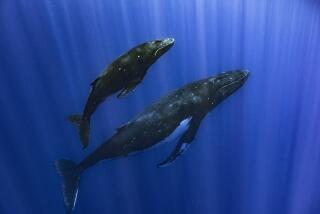Surprise! Scientists discover that sperm cells can slither [VIDEO]
Scientists have discovered that sperm have a previously unrecognized skill – they can swim in a “slither” mode when they are close to the wall of their environment.
The motion of a slithering sperm cell resembles that of a snake wriggling across the desert floor – the head of the sperm points in one direction and the long tail ripples back and forth behind it, propelling the cell in a straight line. All of the action happens in a two-dimensional plane.
This is in contrast to all other known modes of sperm locomotion, which scientists have dubbed “typical,” “helical,” “hyper-helical,” “hyper-activated” and “chiral ribbons.” These swimming methods require the tail of a sperm cell to move in three dimensions, using a corkscrew-type pattern.
A team of scientists from the University of Toronto uncovered the existence of slithering sperm by studying semen from humans and bulls. The scientists, led by engineering graduate student Reza Nosrati, used an imaging technique called total internal reflection fluorescence microscopy. This allowed them to measure the movements of sperm that were a mere one-trillionth of a meter away from the bottom of a glass dish. (For the sake of comparison, that distance is 50 to 80 times smaller than the length of an entire sperm cell.)
The closer the sperm cells were to the edge of the dish, the more likely they were to swim in slither mode. For human sperm, viscosity was a factor too – the more viscous the environment, the more likely they were to slither.
Both bull and human sperm moved in straighter lines when they slithered. But on the whole, slithering seems to be more useful for human sperm than bull sperm. When bull sperm slithered, they swam 50% more slowly than when they used another kind of locomotion that allowed them to move in three dimensions. However, human sperm swam 50% faster than usual when they were in slither mode.
This probably isn’t a coincidence, the researchers wrote. It stands to reason that human sperm would be optimized to move fast in the fallopian tubes, where narrow passages increase viscosity and force cells to travel close to the edge. After all, only the sperm that reaches the egg first is able to fertilize it.
Bull sperm, on the other hand, don’t have to contend with narrow passageways. Since a cow’s fallopian tubes are larger, bull sperm are more likely to be successful if they can swim fast in large spaces where three-dimensional motions are more effective.
One day, the study’s findings could lead to better fertility treatments by helping doctors identify the strongest sperm with the hardiest DNA. Senior author David Sinton, a mechanical engineer specializing in small-scale fluid systems, said he was inspired to study sperm locomotion after he and his wife sought fertility treatments themselves. (They worked.)
The findings were published Tuesday in the journal Nature Communications.
Follow me on Twitter @LATkarenkaplan and “like” Los Angeles Times Science & Health on Facebook.
MORE FROM SCIENCE:
In this lab, popping balloons is serious stuff
Researchers detail what a Rockstar energy drink does to your body
Pear-shaped vs. apple trumps body mass index as a measure of risk







